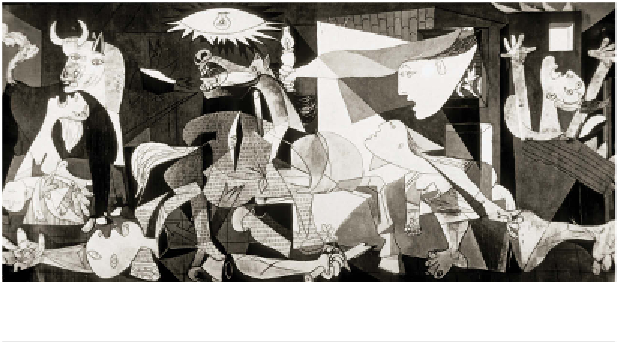Travel Reference
In-Depth Information
If there is a national piece of art today for the European Union, it is Picasso's
Guernica
,
because it reminds Europe of the reality of war.
After World War I, Europe was awakening to the destructive power
of aerial bombardments. During the Spanish Civil War in 1937, Hitler
jumped at a chance to help his fellow fascist, General Francisco Franco, by
bombing the Basque town of Guernica. Surveying the rubble of that town
made it clear that technology had taken the destructive power of war to
new heights. h is inspired Picasso to create his greatest work. His mural
Guernica
memorialized the i rst city destroyed by an aerial bombardment
and gave Europe a preview of the horrors of its fast-approaching war with
frightening accuracy.
In 1947, in the rubble of a bombed-out Europe, Euro-visionaries
assembled and agreed that they needed to overcome the hell that they were
bringing upon themselves every couple of generations with these wars. h eir
solution was to unite. Of course, a union is nothing without people giving
up some measure of real sovereignty. Since 1947, proponents of a European
Union have been convincing the people of proud and independent nations
to trade away bits and pieces of their independence. It's a tough sell. But in
a i tful evolution—two steps forward and one step back—over the last sixty
or so years, they have created a European union.
Fewer Borders, but More Ethnic Diversity
A key strategy for preserving peace in a sprawling, multiethnic state is to
respect and celebrate diversity. As if inspired by America's
e pluribis unum
(“out of many, one”), the European Union's oi cial motto is
in varietate con-
cordia
(“united in diversity”).















































































